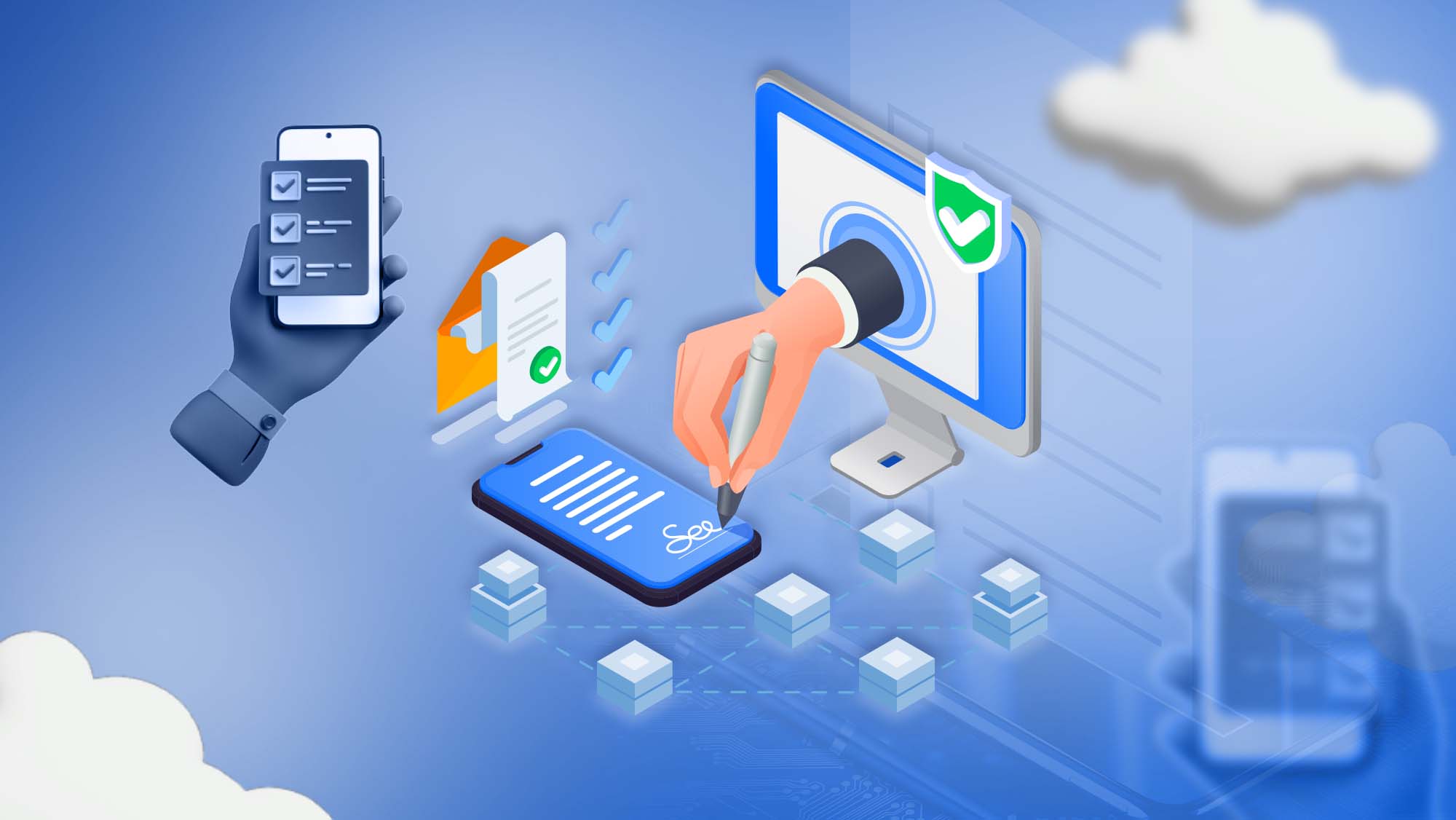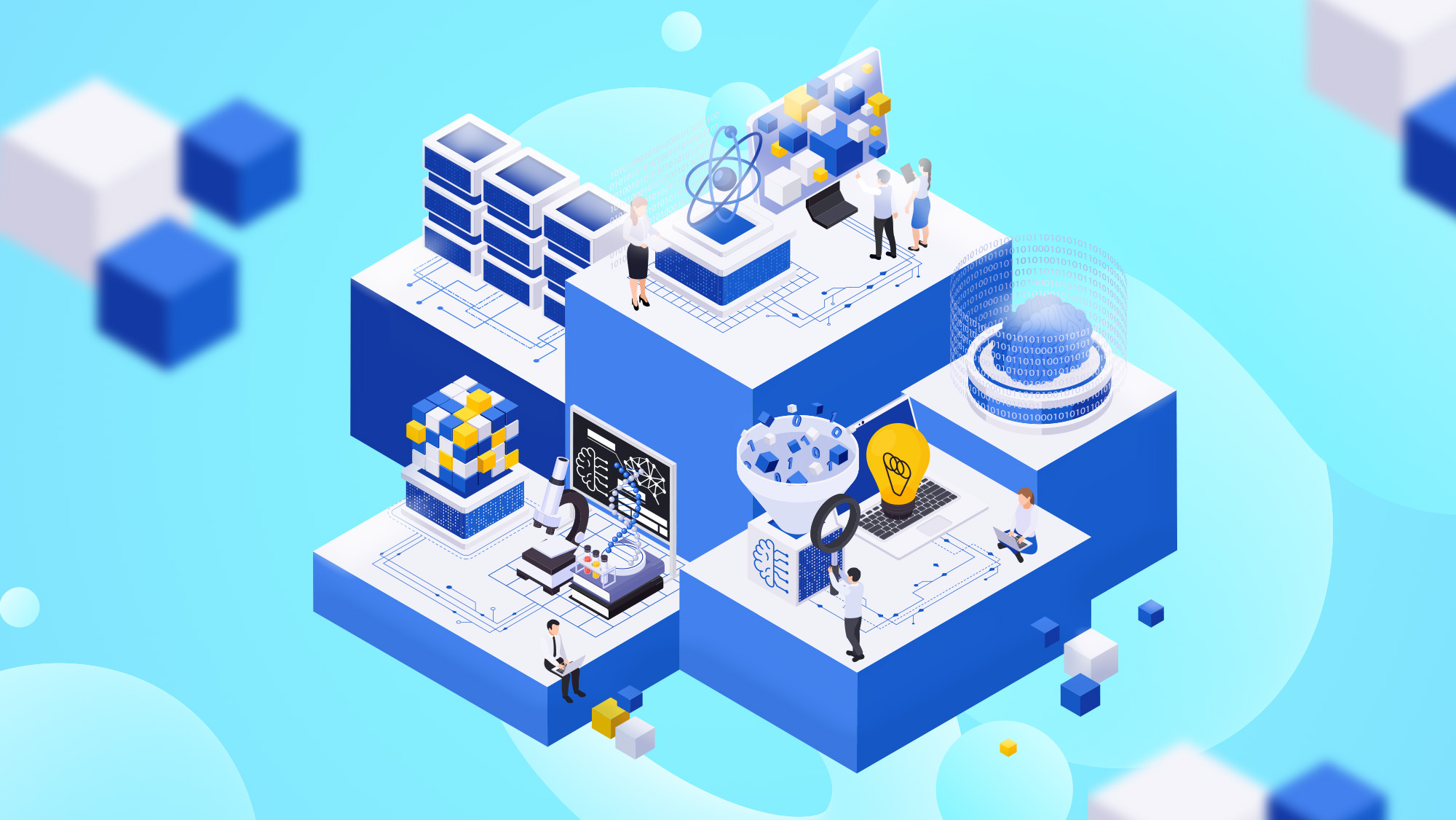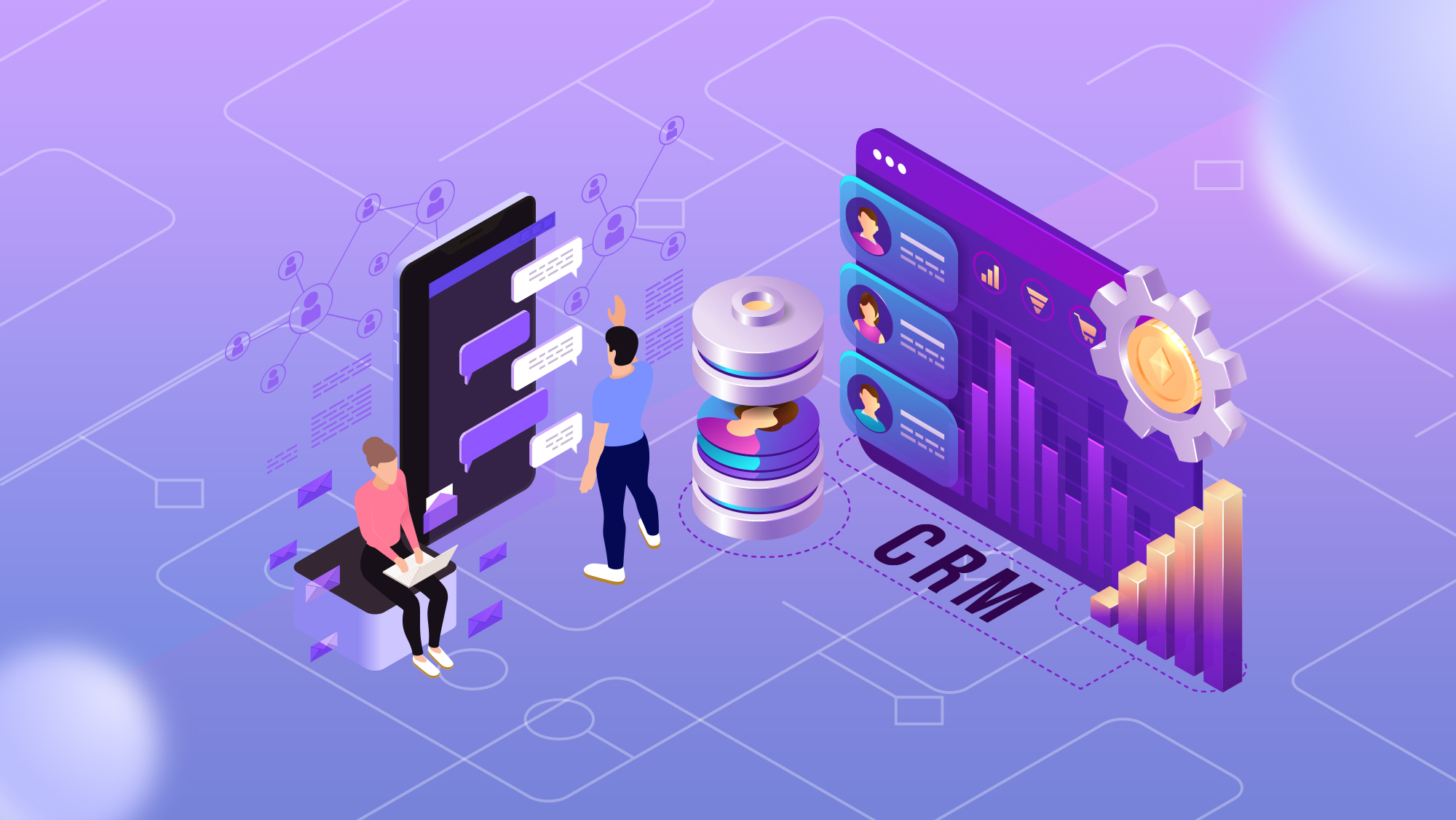Table of Content
The SMBs in Australia encounter various struggles that hinder their growth and success. For example, a small retail store may struggle to keep track of inventory and sales using manual methods, leading to inefficiencies and lost revenue opportunities. Similarly, a growing manufacturing company might find it challenging to coordinate production schedules and manage supply chain operations without a centralised system, resulting in delays and increased costs.
In both cases, Enterprise Resource Planning or ERP software plays a crucial role by providing a standardized cloud-based integrated solution that streamlines processes, optimise resources, and improve decision-making.
This guide delves into the role of ERP software in addressing the emerging challenges of SMBs in Australia.
To get proper insights over ERP systems in Australia, Stay tuned to this write-up.
What is ERP Software Solution?
Enterprise Resource Planning or ERP software is a powerful tool that helps organisations streamline their core processes such as finance, HR, and supply chain management. By centralising data flow and leveraging technologies like AI and machine learning, modern ERP systems across Australia boost productivity and facilitate quicker, more informed decision-making.
In the next upcoming section, you'll learn how this operates within the business realm.
How Do ERP Systems Work?
Suppose a company that manufactures and sells bicycles. Without an ERP system, each department might have its own separate software for managing tasks like inventory, sales, procurement, finance, and human resources.
In simple words, this is the scenario:

Inventory Management: The warehouse team might use one software to track inventory levels and manage stock.
Sales and Customer Relationship Management (CRM): The sales team might use another software to track customer orders, manage leads, and handle customer inquiries.
Finance and Accounting: The finance department might use different software for managing accounts payable, accounts receivable, and financial reporting.
Procurement: The procurement team might have their own system for managing supplier information, purchase orders, and invoices.
Human Resources: The HR department might use separate software for managing employee information, payroll, and benefits.
However, with an ERP system in place, all these functions are integrated into a software platform like this:
- The warehouse team can access real-time inventory data, track shipments, and manage stock levels directly within the ERP system.
- The sales team can view customer orders, track sales performance, and manage customer relationships using the CRM module integrated into the ERP.
- The finance department can generate financial reports, manage accounts payable and receivable, and track expenses within the ERP system and so on.
By centralising all these functions into one system, ERP software helps improve communication, collaboration, and efficiency across the organisation.
It also provides management with real-time insights into business operations, helping them make informed decisions and drive business growth.
List of Industries Taking Advantage of ERP Solutions
Various industries in Australia are leveraging the benefit of ERP systems to enhance efficiency and drive growth. Sectors such as manufacturing, retail, financial services, logistics, healthcare, and nonprofits are maximising ERP advantages.
By streamlining operations, optimising resources, and improving decision-making, these industries are gaining a competitive edge and achieving sustainable success in today's dynamic business landscape.
Let's explore how Enterprise Resource Planning or ERP software addresses the various challenges these industries in Australia, along with situation-based examples from different sectors:
Nonprofit: Nonprofit organisations often struggle with limited resources and complex donor management processes. ERP software can streamline fundraising efforts, donor tracking, and grant management. For example, a charitable organization may use ERP to manage donor databases, track donations, and analyse fundraising campaigns to optimize resource allocation and maximise impact.
Manufacturing: Manufacturing companies grapple with inventory management, production scheduling, and supply chain coordination. ERP software for manufacturing can centralise data, automate processes, and improve efficiency. For instance, a manufacturing business can use ERP to manage inventory levels, track raw materials, and schedule production runs to meet customer demand while minimising waste and delays.
Retail: Retailers face challenges such as inventory management, omnichannel sales, and customer relationship management. ERP solutions can integrate sales, inventory, and customer data to provide a seamless shopping experience. For example, a retail chain may use ERP to track sales across multiple locations, manage inventory levels, and analyze customer preferences to personalise marketing campaigns and drive sales.
Healthcare: Healthcare organisations face challenges such as patient data management, regulatory compliance, and operational efficiency. ERP systems can streamline administrative processes, improve patient care, and enhance decision-making. For example, a hospital may use ERP to manage patient records, schedule appointments, and track medical supplies to ensure timely and efficient delivery of care while complying with healthcare regulations.
Food and Beverages: Businesses in the food and beverage industry must comply with strict quality standards, manage perishable inventory, and maintain traceability throughout the supply chain. ERP software can streamline production processes, track ingredients, and ensure compliance with food safety regulations. For example, a food manufacturer may use ERP to monitor ingredient sourcing, track production batches, and manage expiration dates to prevent waste and ensure product quality.
Financials: Financial institutions deal with complex regulatory requirements, data security concerns, and the need for real-time financial insights. ERP software can streamline accounting processes, ensure compliance, and provide robust reporting capabilities. For instance, a bank may use ERP to reconcile accounts, generate financial reports, and monitor transactional activity to detect fraud or suspicious behavior.
ERP Deployment Model
Let's explore the distinct varieties:
On-Premises Systems: These ERP setups are installed and upheld on the company's own servers or data centers, affording complete control over customization and data security. However, they necessitate a significant initial investment and ongoing maintenance.
Cloud-Based Systems: Hosted on remote servers and accessed via the internet, cloud ERP solutions offer scalability, flexibility, and cost-effectiveness. They enable remote accessibility, catering well to contemporary work environments. Examples encompass Microsoft Dynamics 365 suite, SAP S/4HANA, Oracle Cloud ERP, and Infor CloudSuites.
Hybrid Systems: Merging elements of on-premises and cloud-based ERP, hybrid systems empower organisations to select locally hosted components and those managed in the cloud. They strike a balance between control and convenience.
The Journey of ERP Software
The journey of Enterprise Resource Planning (ERP) from its early days to the cutting-edge technologies of today.
Pre-1960: Traditional Methods & Mainframe Computers
Before the advent of ERP, businesses relied on the traditional paper-and-pencil methods. In the 1940s and 50s, mainframe computers were used to process the bills of materials in large manufacturing firms.
1960-1970: Inventory Control Systems & MRPI
In the 1960s, manufacturing industries began developing systems to manage their inventory. This marked the inception of ERP, focusing initially on inventory management and control. Throughout the 1970s, Material Requirements Planning (MRP I) systems further evolved to meet the specific needs of manufacturing processes.
1980s: Rise of MRP II
In the 1980s, a new and improved system called Manufacturing Resource Planning II (MRP II) came into play. It went beyond just managing inventory and started connecting different parts of the manufacturing process. This meant it could help with things like planning how much production a factory could handle, keeping track of what's happening on the factory floor, and scheduling when things should be made. So basically, it made managing a manufacturing business much smoother and organised.
1990s: Birth of ERP
During the 1990s, ERP systems became the go-to-solution for integrating business processes. They expanded from manufacturing to encompass finance, human resources, sales, and other functions. Companies adopted ERP to streamline operations, increase efficiency, and make better decisions.
2000s: ERP Evolves with Web Features
This period introduced ERP II, emphasizing collaboration, customer relationship management (CRM), and supply chain management. Internet technologies enabled instant data sharing among departments and businesses.
2010s: Cloud-Based ERP
During the 2010s, there was a move towards cloud-based ERP solutions. Cloud ERP provided scalability, flexibility, and lowered infrastructure expenses. Businesses could use ERP systems through the cloud, facilitating remote work and effortless updates.
Future of ERP Systems in 2024 & Beyond
The future of ERP is in AI-powered automation, IoT integration, and data analytics. ERP will keep evolving to meet evolving business demands, offering more intelligent insights, and improving decision-making.
Recognizing the signs indicating the need for a modern or cloud-based ERP system can help businesses stay competitive and efficient. Here are ten signs to look out for:
What if a business doesn’t have ERP System?
Not having ERP system to manage the business processes may lead to following below-mentioned consequences:
Future of ERP Systems in 2024 & Beyond
The future of ERP is in AI-powered automation, IoT integration, and data analytics. ERP will keep evolving to meet evolving business demands, offering more intelligent insights, and improving decision-making.
Processes Lack Centralisation
Your organisation processes will remain disjoint. With ERP software, everything is centralised, providing a single source for information and interactions. ERP software eliminates the need for multiple systems, offering unified data, reports, and analytics.
Inaccurate Decision-Making
Many organisations face data silos, hindering communication, and collaboration. This happens because they don’t have access to real-time data, but your business can get this by investing in good ERP software. Accurate data and real-time insights provided by the ERP system empower the management team to make informed decisions swiftly, ensuring operational efficiency, customer satisfaction, and profitability in a dynamic business environment.
Multiple Software System
Organisations invest in multiple software solutions to manage the different aspects of their operations. This fragmented approach leads to disjoined processes, data duplication, and increased complexity. With disparate systems for accounting, inventory management, sales, and HR, businesses struggle to integrate data and streamline workflows. This lack of integration hampers efficiency inhibits collaboration between departments and impedes the ability to make informed decisions based on a unified view of the business.
Increased Compliance Risks
In Australia, businesses are subject to various regulatory related taxation, accounting standards, data protection, and industry-specific regulations. Without an effective ERP system to ensure compliance and facilitate reporting, businesses may struggle to adhere to these regulations, risking penalties, fines, or even legal consequences. Furthermore, the absence of proper data security measures within an ERP system can expose sensitive information to breaches, leading to severe repercussions in terms of trust and reputation.
Limited Scalability & Growth Potential
As businesses in Australia strive for growth and expansion, scalability becomes a crucial consideration. Without an effective ERP system that can adapt to evolving business needs and scale seamlessly, organizations may find it challenging to manage increased transaction volumes, expanded product lines, or entry into new markets. This lack of scalability can constrain growth opportunities and hinder the ability to captilise on emerging trends or market opportunities, ultimately stifling long-term success.
Higher Operational Costs & Reduced Profitability
Inefficient processes, manual workflows, and disparate systems not only hamper productivity but also contribute to higher operational costs. A good ERP system has in-built automation, streamlining and optimisation capabilities and without these businesses may incur unnecessary expenses in terms of labor, inventory carrying costs, procurement, and administrative overheads. Moreover, without accurate data and insights, businesses may make inefficient decisions regarding resource allocation and pricing, which can ultimately reduce profitability.
In simple words, we can say that the absence of an effective ERP system can have far-reaching implications for business operating in Australia, impacting their competitiveness, compliance, customer satisfaction, scalability, and profitability.
Conclusion
In conclusion, the necessity of ERP systems in Australia can’t be overstated. As businesses across various industries face mounting challenges and increasing competition, ERP systems emerge as indispensable tools for streamlining operations, enhancing efficiency, and driving growth. With the complexities of modern business environments, Australian companies require robust ERP solutions to integrate disparate processes, facilitate data-driven decision-making, and adapt to evolving market dynamics.
Moreover, in the digital age where agility and responsiveness are paramount, ERP systems provide the framework for organisations to navigate change effectively and seize opportunities for innovation and expansion. By embracing ERP solutions tailored to their specific needs, Australian businesses can position themselves for long-term success, fostering resilience, competitiveness, and sustainable growth in the dynamics and ever-evolving landscape of Australian business ecosystem.

Related Posts - What is Dynamics 365 Business Central?
Related Posts - Business Central Pricing and Licensing
FAQs
1. What is ERP?
ERP in Australia refers to Enterprise Resource Planning systems, which are comprehensive software solutions used by businesses to manage and integrate various core processes such as finance, human resources, supply chain, and more. These systems help streamline operations, improve efficiency, and enhance decision-making within Australian businesses.
2. What is an example of ERP software?
An example of ERP software is Microsoft Dynamics 365 ERP, which is widely used by businesses globally to integrate and manage their various business processes. Other examples include SAP ERP, Oracle ERP Cloud, Microsoft Dynamics 365, and NetSuite ERP.
3. Which ERP software is used for the manufacturing industry?
ERP software commonly used in the manufacturing industry includes systems like SAP S/4HANA, Oracle Manufacturing Cloud, and Microsoft Dynamics 365 for Finance and Operations. These ERP systems for manufacturing are tailored to address the specific needs of manufacturing businesses, such as production planning, inventory management, and quality control.
4. Which is the Best ERP for SMBs in Australia?
The best ERP for small businesses in Australia depends on various factors such as the specific needs of the business, budget, and scalability requirements. Some popular ERP options suitable for small businesses in Australia include NetSuite ERP, Microsoft Dynamics 365 Business Central, and SAP Business One. It's essential for small businesses to evaluate their unique requirements and choose an ERP solution that aligns with their goals and resources.
5. What are the cost considerations for implementing an ERP system in Australia?
The cost of implementing an ERP system in Australia varies depending on factors such as the size of the organization, the complexity of business processes, customization requirements, and ongoing support and maintenance. Costs typically include software licensing fees, implementation services, training, and infrastructure expenses.
6. How can businesses ensure a successful ERP implementation project in Australia?
Successful ERP implementation in Australia requires careful planning, stakeholder involvement, thorough training, and effective change management. Businesses should also engage with experienced ERP implementation partners or consultants who understand local regulations and industry best practices to ensure a smooth transition and maximize the benefits of the ERP system.
7. What security measures are in place to protect data within ERP systems used by Australian businesses?
ERP systems used by Australian businesses employ various security measures such as role-based access controls, data encryption, regular security updates, and compliance with industry standards like ISO 27001. Additionally, many ERP vendors offer features like multi-factor authentication and intrusion detection to safeguard sensitive data from unauthorized access or cyber threats.
8. How does cloud-based ERP software support remote work and mobile access for organizations?
Cloud-based ERP software enables Australian organizations to support remote work and provide mobile access to critical business data and processes. Employees can access the ERP system from any location with internet connectivity, using desktops, laptops, tablets, or smartphones. This flexibility enhances productivity, collaboration, and decision-making, particularly in distributed or remote work environments.

Witness a Scalable Transformation
Experience real-time synchronisation and flexibility with a consistent view across your business.
Disclaimer– “All data and information provided on this blog is for informational purposes only. Dynamics Square / MPG Business Information Systems Pvt. Ltd. makes no representations as to accuracy, completeness, currentness, suitability, or validity of any information on this site and will not be liable for any errors, omissions, or delays in this information or any losses, injuries, or damages arising from its display or use.”
Related Posts & Blogs
Contemporary businesses are changing at a rate of knots using innovative business solutions to stay afloat. Know more about industry trends, challenges and opportunities in detail after going through an array of exciting blogs.
Read the blogs penned by industry-experts who know the nerve of the business to start your digital transformation journey.
Looking to enhance your business accounting? Discover how Dynamics 365 can help you streamline your financial ...
ERP Requirement Checklist talks about the considerations while choosing a business management system for your ...
Dynamics 365 ERP is a powerful tool that can help streamline your supply chain management. In this blog, we wi...
Dynamics 365 is a cloud-based CRM and ERP system that helps businesses manage their sales, marketing, and cust...


















